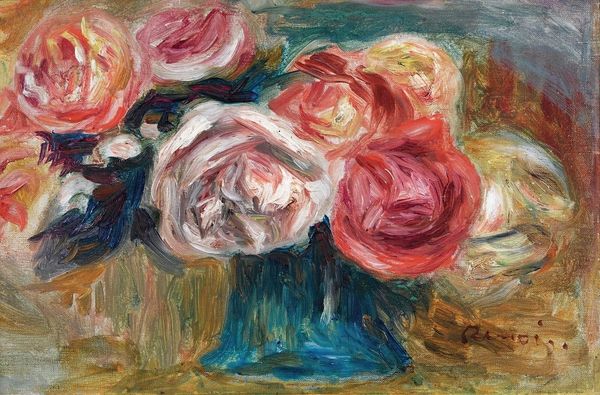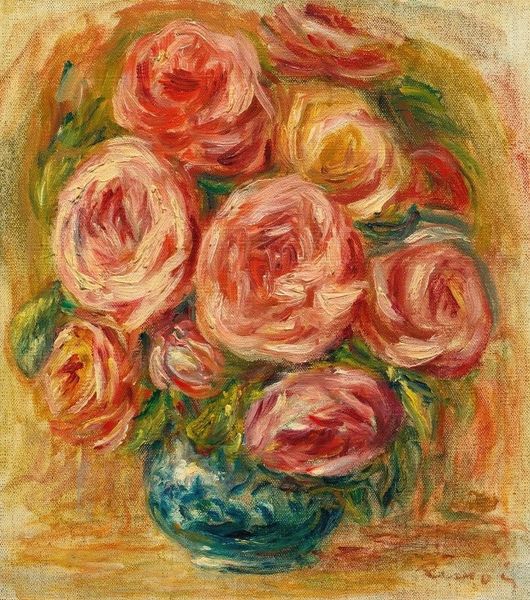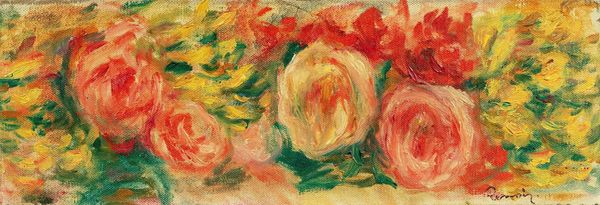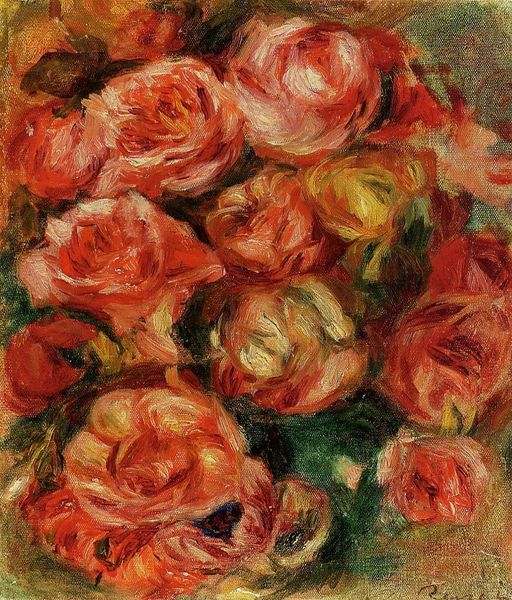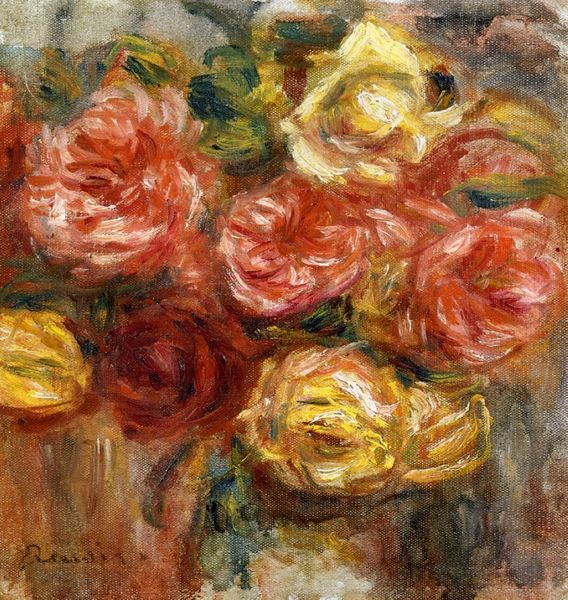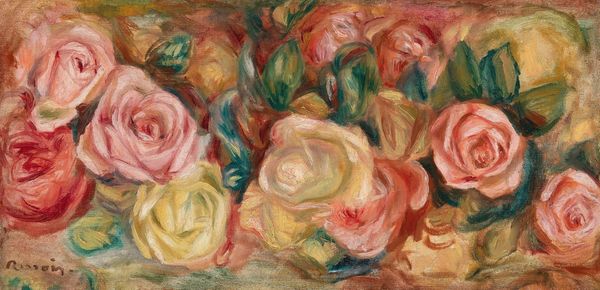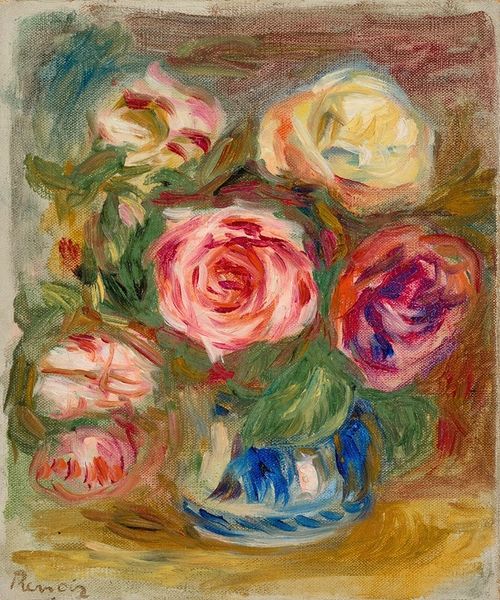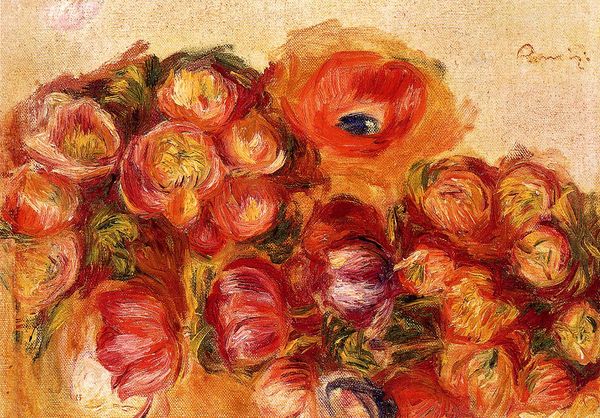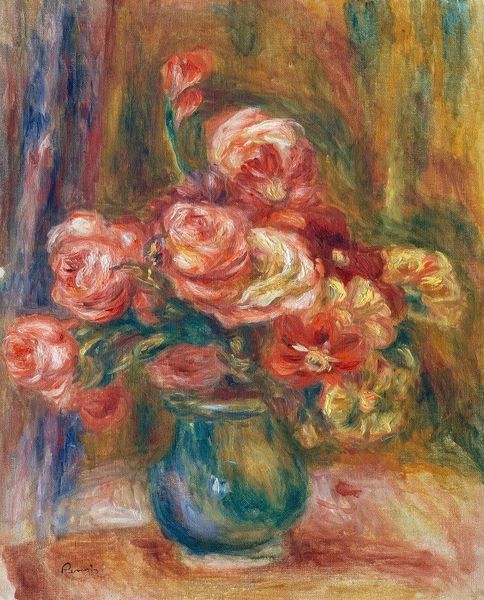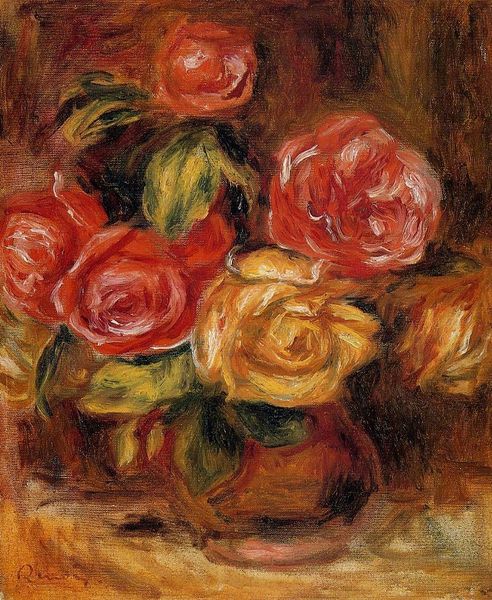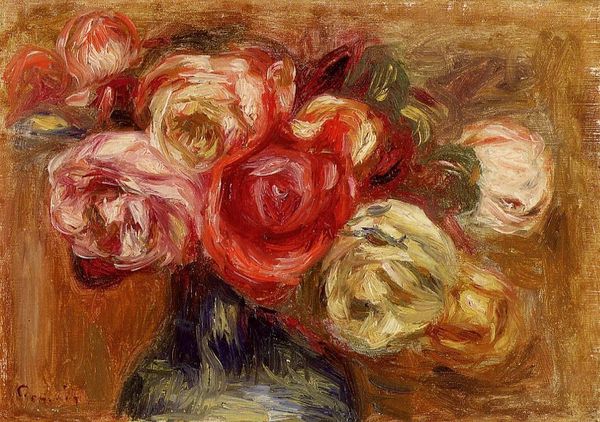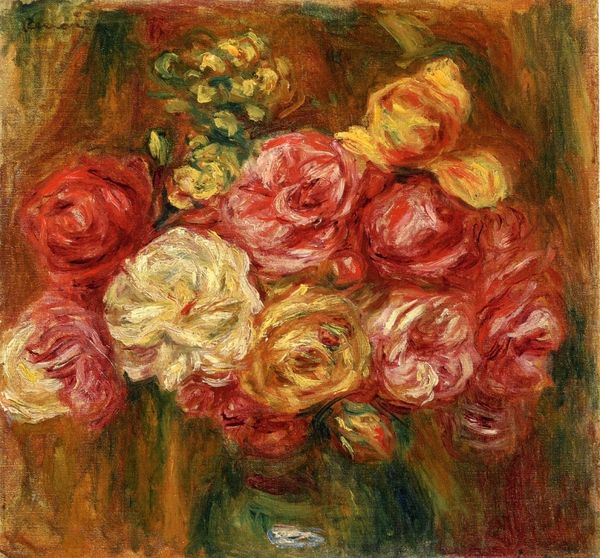
Copyright: Public Domain: Artvee
Editor: We’re looking at "Roses," painted in 1915 by Pierre-Auguste Renoir, using oil on canvas. The texture looks so thick! I immediately think of summer, with its loose, vibrant brushstrokes, and I’m curious how Renoir’s composition plays with depth and light. What draws your eye when you examine it? Curator: The visual rhythm established through the repetition of rounded forms, particularly the roses themselves, is captivating. Notice how Renoir's impasto technique contributes to a surface of undulating textures. Consider the interplay between the opaque solidity of the blooms and the almost ethereal quality of the background. What significance might this juxtaposition hold in understanding Renoir's artistic intentions, do you think? Editor: Maybe it’s about drawing attention to the flowers, making them the clear subject? But why this vantage point? Curator: The arrangement is strategic; the placement of the roses across the canvas guides the viewer’s eye, ensuring that no single focal point dominates. It is not about one rose, but about a totality of experience. Look closely at how light interacts with the various colours—pinks, yellows, and creams. How do these tonal modulations affect your perception of the painting’s overall structure and sensory impact? Editor: It definitely makes the painting feel alive, not staged. I’m seeing how Renoir isn’t just showing roses but recreating a sensory experience. Curator: Precisely. He’s exploring the potential of paint itself to evoke feeling through form, colour, and texture alone, wouldn’t you agree? Editor: Yes! Seeing the structure helps appreciate the feeling it creates. Curator: Indeed, that interaction exemplifies how deeply engaging with formalism reveals hidden aesthetic potentials.
Comments
No comments
Be the first to comment and join the conversation on the ultimate creative platform.
